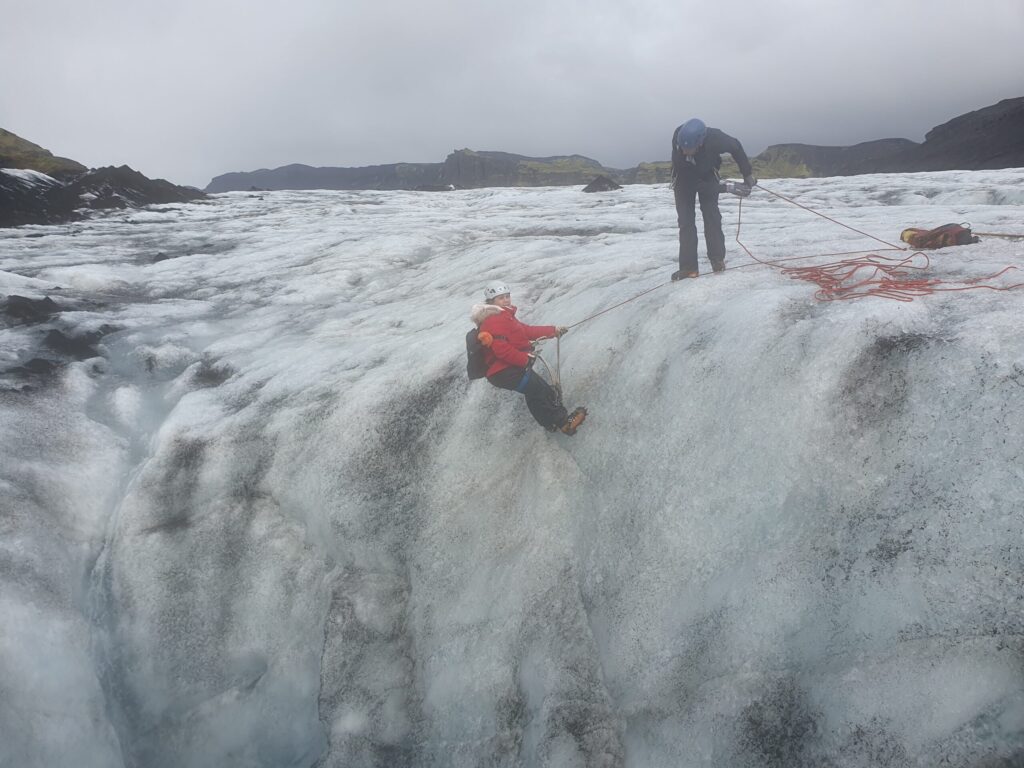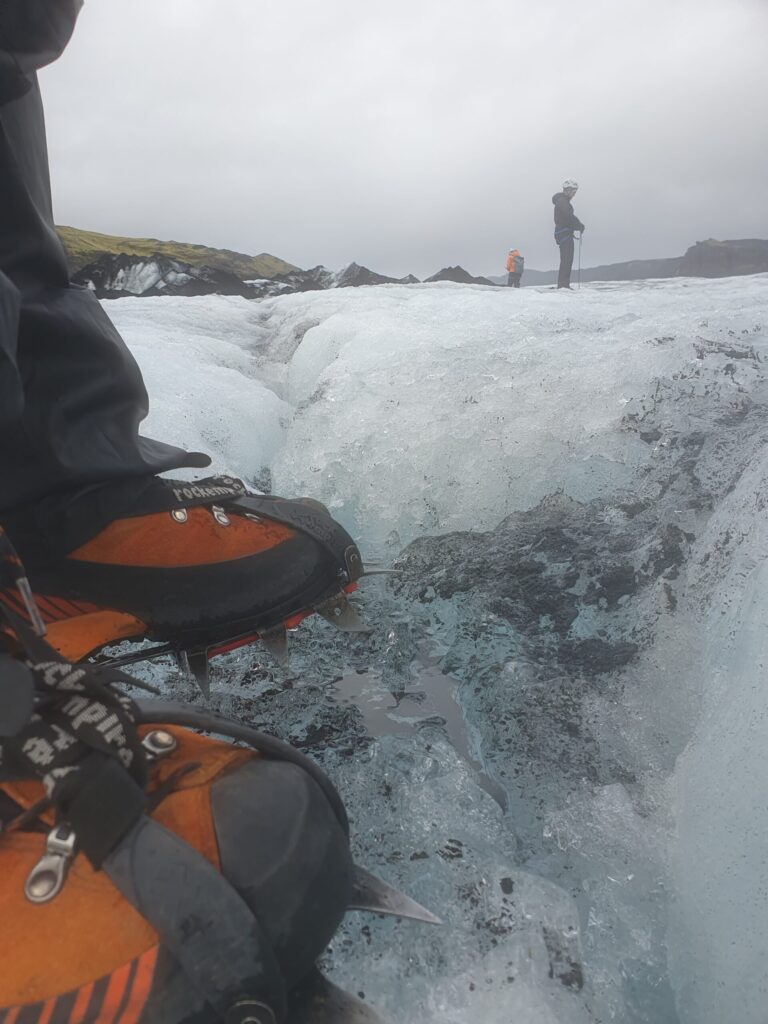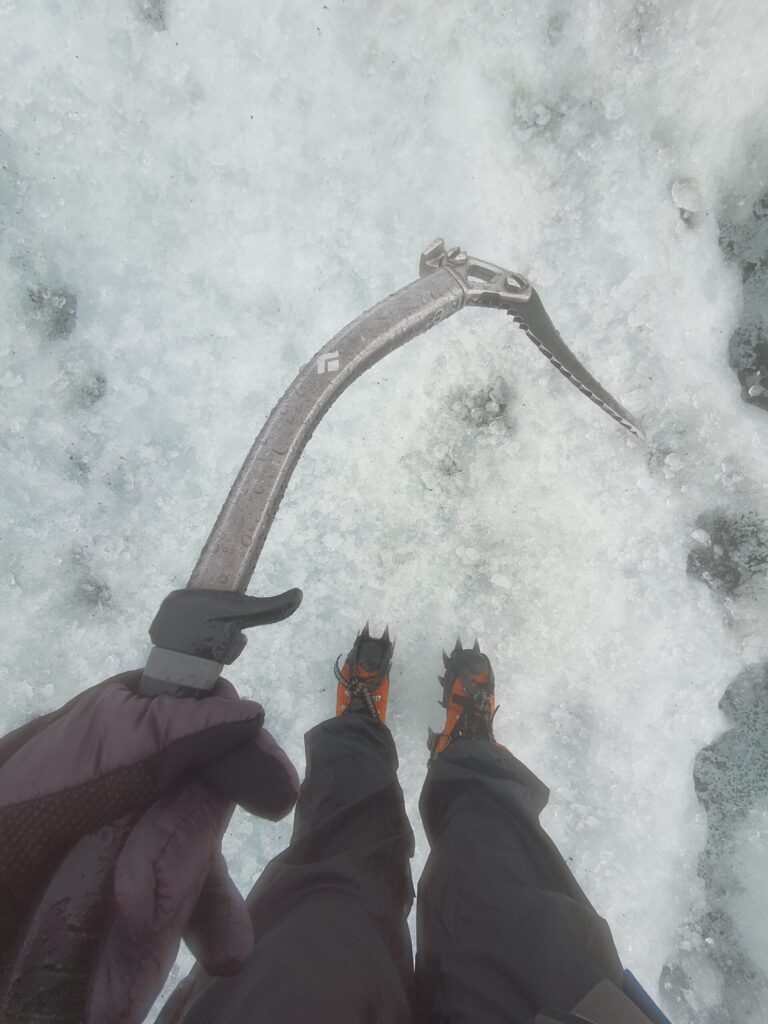Staring down a hole in Sólheimajökull glacier in Iceland, strapped into a harness and hanging by a piece of rope over a 30-meter (98-foot drop), I can’t help but wonder how I got into this precarious position. Given that a lot of things could go wrong while ice climbing (the rope could snap, the sharp blades of the crampons on my feet could slice through my legs), I find myself questioning my own judgment. But let’s start at the beginning.
Mid-September 2023, I flew to Iceland, which lies just below the Arctic Circle between 64 and 66 degrees north. With its unique geography shaped by millennia of volcanic activity and mighty glaciers, this magnificent country is dubbed “The Land of Fire and Ice” due to its contrasting landscapes.

One of the most accessible places to try ice climbing is the Sólheimajökull glacier, which boasts of ice formations that look out of this world. Its black-and-white glacial mounds look like they belong to a landscape found in Mars, not a site located only two hours away from Iceland’s capital city, Reykjavik. The black deposits are caused by volcanic ash and each layer indicates an eruption. Hiking on Sólheimajökull glacier means seeing deep crevasses, rugged ridges and sinkholes.
Our guide led us to a glacier hole where they had set up the ropes that we would use for our ice climbing activity. The situation became very real, very fast. But I try to enjoy the view as my harness is attached to the rope that serves as my lifeline and listen to the calming sounds of the nearby glacial spring.
Our ice climbing activity starts out with me basically rappelling down the glacier hole. I kicked my crampons deep into the glacier wall to serve as a sort of platform where I could stand up. I then used the climbing axes and dug them deep into the glacier wall. When I felt that the two climbing axes were secure enough to hold my body weight, I pulled myself up and used my crampons as stepping stones to climb up the glacier wall.
Adrenaline mixed with the joy of ice climbing and taking in the rushing water and the gaping hole beneath me. The cold arctic air really drives home that this is happening and makes me feel even more alive, although the massive effort also has sweat streaming along my temples underneath my helmet.

After ice climbing, my face was freezing, my knees were sore from being knocked against the glacier wall and my legs were wobbly, but I felt the exhilaration of being alive and surviving that 30-meter drop. What a blast!
On the way back to Reykjavik, keep your eyes peeled for the beautiful greenhouses all lit up with warm orange lighting. The Friðheimar farm is the famous greenhouse where you can try the soup made with tomatoes grown using geothermal energy.
Ultimately, the best moments in Iceland are those that you need to experience with your own senses: Seeing the glorious Northern Lights dancing in the sky, drinking pure glacial water from thousand-year-old glaciers, or eating the world-renowned lamb hotdogs of Bæjarins Beztu Pylsur.
But that is another story worth telling in a future article. For now, it is enough to look back on the Sólheimajökull glacier which they predict will be gone in two decades’ time because of global warming. If you’ve been holding back on doing #revengetravel, this is your sign to head to Iceland and unleash your hidden adventurer side.


